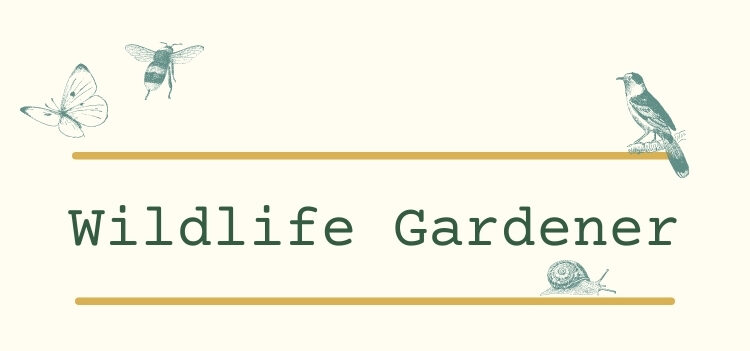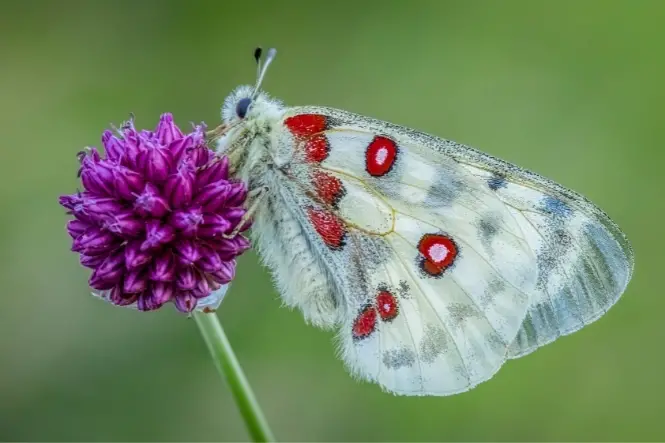Butterflies and moths are some of the most attractive of all the world’s insects and Britain has more than its fair share of really striking varieties.
Planting buddleia, mallow, honeysuckle and other nectar-rich plants in the wildlife garden is a sure-fire way to guarantee that you’ll not be short of butterfly or moth visitors over the summer, but you’re going to want to know what you’re looking at – and that’s often where the problems start.
With the creature sitting right in front of you, it’s hard to imagine how you could possibly forget what it looks like – those fabulous colours, that unusual shape to its wing – but the truth is, when you get out your guidebook, remembering what you saw accurately enough to identify it can be surprisingly difficult.
The good news is, however, that if you teach yourself a few simple things to look out for, the whole process becomes a lot easier.
Butterfly or Moth?
The first question has to be, is it a butterfly or a moth? It’s often said that butterflies are active by day and moths by night – and while it’s mostly true, there are more than enough day-flying moths to confuse the issue!
Fortunately, there are other clues to go on – as a general rule, for instance, butterflies sit at repose with their wings together, held up over their bodies, while moths hold theirs out to the side, but this isn’t an entirely reliable distinction. Again, generally butterflies tend to be more brightly coloured than moths, though some individuals of both groups buck the trend –such as the boldly patterned Elephant Hawk Moth and the drab Owl Butterfly!
If you really want to be sure, you need to look at their antennae; if they end in a club-shaped swelling, then you’re looking at a butterfly, if they don’t – it’s a moth; being able to make this simple distinction will at least get you started in the right section of your guide book.
Size, Shape and Colour
Take a careful note of the size, general shape and colour of your visiting butterfly or moth, since these, probably more than anything, will help you make the proper identification. Obviously the longer it stays still, the easier these observations are to make, but with practice you can train yourself to tell a lot from even a fairly fleeting glance. You don’t need to worry about being too precise – a general idea of how big the insect is will probably be good enough.
If you can learn to make quick estimates by comparing your visitor with something fixed – twice the width of the buddleia spike, or half as big as a mallow flower, for instance – you’ll be able to gauge its rough size very easily which should prove very useful when it comes to deciding what it was.
Remembering colours, patterns and markings can be much more difficult than you might think, so it’s worth concentrating and making a real effort to commit your observations to memory. A few hours later, trying to remember the number of spots, their shape and colour can be well-nigh impossible if you don’t – and it’s probably worthwhile taking a leaf out of the old Victorian naturalists’ book and write things down, preferably while you’re still looking at your quarry!
Picking Your Guidebook
It’s all very well making the most detailed of observations, but if you don’t have a good guidebook, working out what you’ve spent your time looking at can be unbelievably frustrating!
Fortunately there are a number of excellent field guides and it’s often worthwhile taking the time to visit a good bookshop and actually looking through what’s on offer if you possibly can. Picking a guide is a bit like selecting a garden tool – you need to find the right one for you and it’s hard to do that at a distance, although this does make things hard for those of us who live in remote areas where local bookshops are themselves an endangered species!
If you do have to resort to online buying, try to do as much research as you can before you make your choice – ask fellow wildlife watchers which books they use, for instance – and don’t forget to read other buyers’ reviews if they’re available, since they can often be very helpful. When all else fails, choose a book that has good actual photographs, clear descriptions and lists the likely food plants of the caterpillars – an invaluable help when it comes to identifying larval moths and butterflies – and you won’t go far wrong.
Come the summer, the wildlife garden is likely to be inundated with more than enough butterflies and moths of all colours and sizes to keep any amateur naturalist happy and once you start feeling confident about identifying them, there’s even more enjoyment to be had from your visitors.

